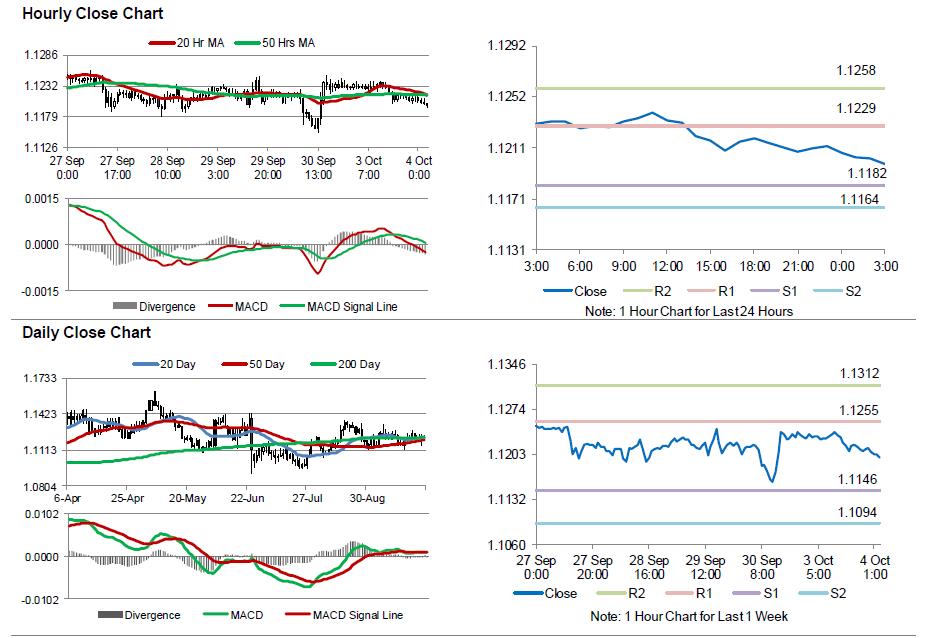For the 24 hours to 23:00 GMT, the EUR declined 0.2% against the USD and closed at 1.1213. Meanwhile, Euro-zone’s final Markit manufacturing PMI advanced to a level of 52.6 in September, in line with market expectations and confirming the preliminary print. The PMI had registered a reading of 51.7 in the previous month.
Elsewhere, in Germany, the final Markit manufacturing PMI rose to a level of 54.3 in September, after recording a similar rise in the preliminary figure and compared to a reading of 53.6 in the previous month.
Macroeconomic data released in the US indicated that the ISM manufacturing activity index climbed more-than-expected to a level of 51.5 in September, creeping out of the contraction territory. Markets expected the index to rise to a level of 50.3, compared to a level of 49.4 in the prior month. On the other hand, the nation’s construction spending unexpectedly dropped for the second straight month, to its lowest level in eight months, after it fell by 0.7% on a monthly basis in August, defying investor consensus for it to rise by 0.3%, compared to a revised drop of 0.3% in the previous month. Additionally, the nation’s final Markit manufacturing PMI eased to a level of 51.5 in September, compared to a level of 52.0 in the prior month whereas preliminary figures had indicated a fall to a level of 51.4.
In the Asian session, at GMT0300, the pair is trading at 1.1199, with the EUR trading 0.12% lower against the USD from yesterday’s close.
The pair is expected to find support at 1.1182, and a fall through could take it to the next support level of 1.1164. The pair is expected to find its first resistance at 1.1229, and a rise through could take it to the next resistance level of 1.1258.
Amid a lack of major economic releases in the Euro-zone today, investors would look forward to the US IBD/TIPP economic optimism index for October, slated to release later in the day.
The currency pair is trading below its 20 Hr and 50 Hr moving averages.

